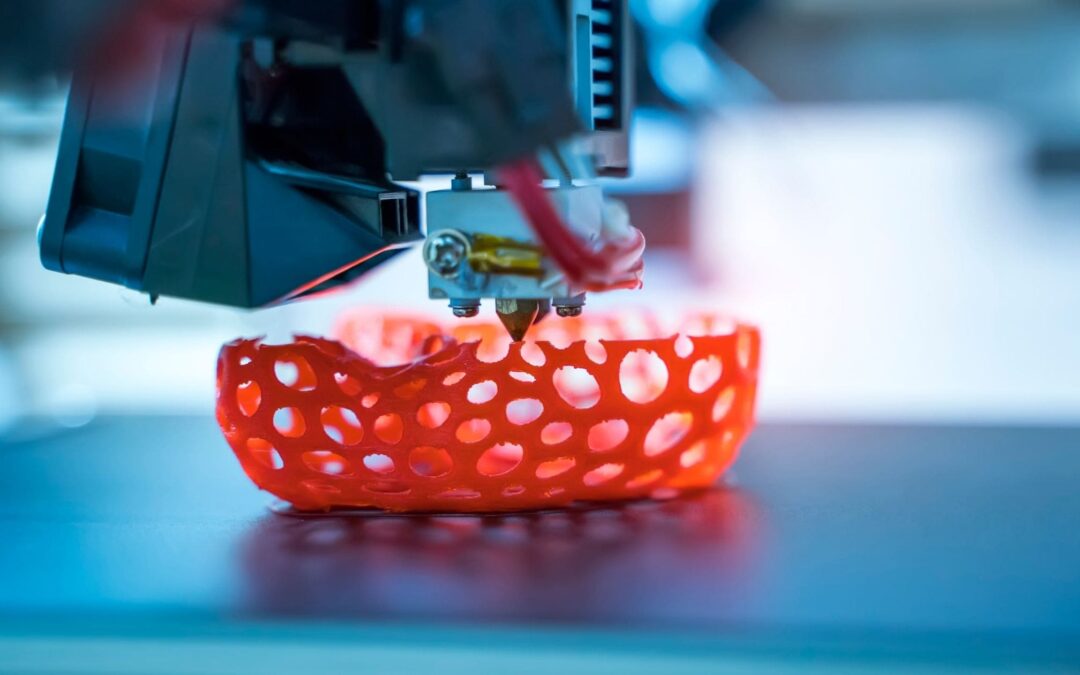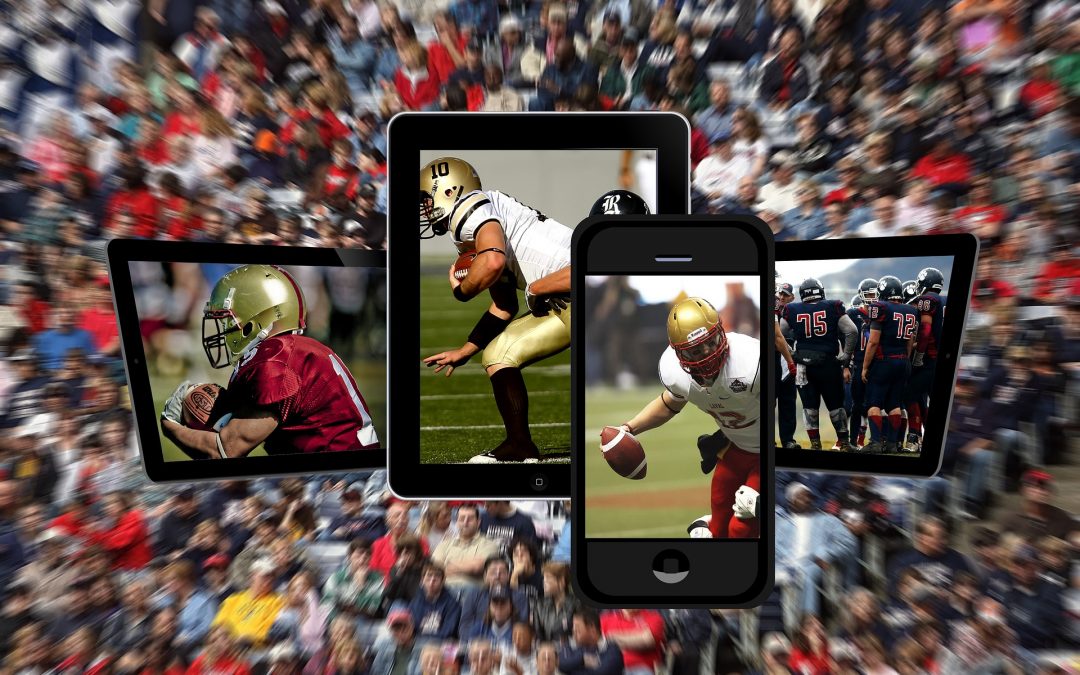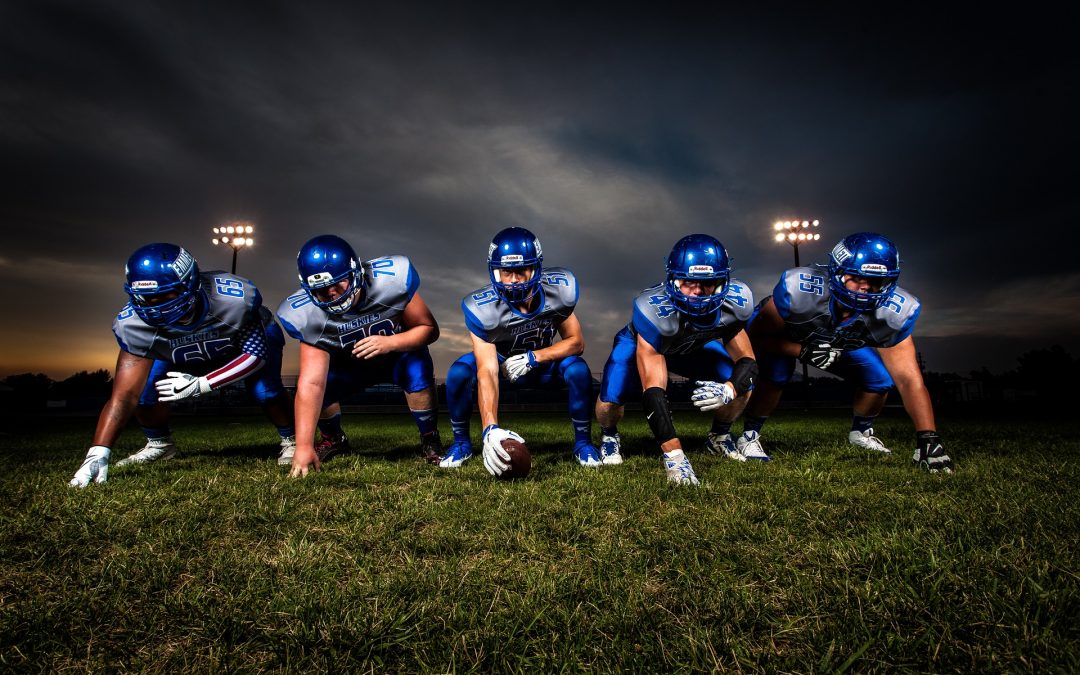
by Don Basile | Jul 25, 2022 | Sports, Tech
These days, it’s all about the steps – about counting how many one has taken in any given day, via one device or another. Have I reached the exalted threshold of 10,000? Or must I get myself off the couch and trudge around the block? More to the point, have I gone far enough to justify seconds on dessert?
All pertinent questions, and all questions many of us are asking ourselves, now that the wearables have become all the rage. Whether it’s a FitBit or smart watch or some other gadget, some 57 million Americans have taken to wearing devices that track not only their exercise rate but also their vital signs, sleep patterns or caloric intake. It is estimated that the wearable market is currently an industry worth between $25 billion and $33 billion annually, and one that will soar past $63 billion by 2027.
Such is Americans’ obsession with wearables, in fact, that some experts worry that it could lead to mental-health issues – that folks will equate their step count to their self-worth. But in a society that has grown too sedentary, too obese and too prone to chronic conditions like heart disease, cancer and diabetes, every step (whether literal or figurative) would appear to be a positive one.
As Johns Hopkins Medicine cardiologist Seth Martin said on that organization’s website:
“Fitness trackers are a great tool for heart health. Being more active and changing your habits is important, but it can be difficult. Tracking likely helps a lot of people when combined with a clear goal to shoot for.”
Given the popularity of such gadgetry, it should come as no surprise that innovation in the field is ongoing; everybody, it seems, wants to be on the cutting edge. Nor should it be a surprise that 3D printing is playing an increased role in this sector.
Consider the development in 2011 by a team from the University of Arizona’s School of Engineering of a health monitor that never needs to be recharged. This device, labeled “a completely new concept” by Arizona professor Philipp Gutruf, features 3D-printed mesh that can be fitted to different body parts, and which requires no adhesives. Moreover, it is embedded with miniature sensors that enable it to track different biometrics, and draws its power from radio signals – known as “far-field” energy harnessing, according to a UA news release.
Also notable were the developments at two Korean universities of biosensors that use 3D-printed frameworks – one made of a polyvinylidene fluoride (PVDF)/barium titanate (BTO) composite, the other of a sugar scaffold (eventually dissolved) which was injected with a silicone elastomer filler. The first of these sensors was piezoelectric, meaning that it draws its energy from applied stress. One example was when it was fitted into a taekwondo belt, which is constantly subjected to the blows of the competitors in that martial art.
Certainly 3D printers come into play in other aspects of sports, as when it is used to customize equipment that protects athletes from injury and leads to improved performance. Moreover, it has been found that such items reduce the industry’s carbon footprint and enable increased participation by disabled competitors.
But the greatest impact of all is in the day-to-day use of fitness trackers. Everyone seems to have one, and everyone stands to benefit. And those produced by 3D printers seem to have as much promise as any given their durability, flexibility and user friendliness.

by Don Basile | Apr 10, 2017 | Sports, Tech
2017 Agreement Between Players and NBA Says Practice Games Only
From Fitbit Trackers for the average consumer to the Zephyr Bioharness, which is allowed by Major League Baseball for players during actual games, wearable sports technology is hitting fields, tracks and gyms right and left. But not the basketball courts of the NBA, according to a recent decision between the organization and the Players Association.
The collective bargaining agreement released earlier this year states explicitly (and more than 250 pages into the document) that, “No Team may request a player to use any Wearable unless such device is one of the devices currently in use as set forth in Section 13(f)below or the device and the Team’s cybersecurity standards have been approved by the Committee.”
Section F makes it clear that players will only wear the device on a voluntary basis. The agreement further states that devices can be worn during practice— but not games.
Wearable devices for professional athletes measure everything from movement information (such as distance, velocity, acceleration, deceleration, jumps, and changes of direction), to biometric information (heart rate, heart rate variability, skin temperature, blood oxygen, hydration). Depending on the device, other health, fitness and performance information is gathered.
The technology is not, by today’s standard, new. The Adidas miCoach Elite Team System (one of approved devices for practice) hit the market in 2013. It’s touted, by Adidas, as the first of its kind “that uses physiological data in real time sending it straight to a coach’s tablet on the sideline. The system not only provides real-time insights during training, but tracks total training impact, collects and manages data and is highly portable.”
The goal of the system was to “offer insights into player performance and work rate, helping teams achieve and maintain peak physical performance.”
Apparently unconvinced about the need for wearable devices—but well aware that there’s no turning back from the wearable tech trend—the 2017 agreement sets up a committee to continue to explore the issue.

by Don Basile | Mar 23, 2017 | Sports, Tech
Wearable technology is far from limited to watches and glasses. Though smart clothing is admittedly taking longer to catch on, the possibilities are really endless when apparel is ascribed that “smart” quality that makes IoT products unique.
What if, for example, your pants were embedded with sensors that could tell you about your body, movements, and need throughout the day? Smart trousers are far from just a pipe dream. With various different visions in mind, several technology/apparel companies are developing pants that do more than just fit.
Sweetflexx, for example, sells leggings with “resistance band technology” to help wearers burn up to 255 extra calories a day, when worn. Their unique fabric technology is designed with comfort in mind, with crushed jade stone infused to lower body temperature by 10 degrees, and harness everyday movement to challenge muscles and tone your body.
Another type of smart athletic pants, developed by Athos, measures your muscular effort and maps it on a smartphone app. The app can tell you whether or not you are reaching your maximum muscle potential, if you are favoring one side of your body of another, or if some muscles are working harder than others.
There are also “smart tights” available for yoga enthusiasts. Sydney-based Nadi X comes with an app, and areas of the tights vibrate where posture and form need to be adjusted.
But as we’re discovering more and more, wearables have application outside of just sports. As one example, wearable tech trousers for tradesmen have been designed to keep workers safe. Developed by Snickers — the workwear company, not the candy — the pants house a device that collects data to alert wearers about knee protection and loud noise levels. The idea is to improve the health and safety of the employees wearing them, who may not realize when their health or safety is threatened. The data collection element of these wearables can help employers make adjustments that ensure safer, healthier conditions for workers.
Does wearing smart pants, necessarily, make you a smarty-pants? Maybe! The whole point of wearable technology is to add value and function, and it follows that the more value an item of clothing has, the smarter an investment it is. Though the examples listed probably aren’t for everybody, they do a great job of demonstrating that wearable technology has potential beyond wristwear.

by Don Basile | Mar 23, 2017 | Sports, Tech
“There’s no better time to strike than when you’re winning.” That’s according to Cedric Brown, Interactive Marketing Content Manager for the Miami Heat. On a recent panel called “The Evolution of Sports Fan Experience, Powered By Technology, hosted by Social Media Week Miami, Brown and other Miami tech marketing specialists came together to talk about how Miami teams are modernizing the fan experience–and why a winning team can make all the difference.
Sports teams across the country are undergoing a shift from paper to mobile for tickets. In 2016, this is mostly a welcome change: as Brown points out, “people just don’t use paper anymore.” Four or five years ago, the Miami Heat introduced mobile ticketing at a time it might have not been so popular, if it weren’t for one fact: The Heat were NBA champions from 2011 through 2014. “We noticed that fans hate change,” Brown said. “It’s a lot easier to push a mobile app….when they come to see a great product on the floor.”
Ticketing is just one of many changes disrupting the sports fan experience, but it’s an important one. More people are getting tickets on their phones now than ever, with mobile ticketing expected to account for one in two tickets by 2019. The New York Yankees recently switched over to mobile ticketing entirely, and many teams have apps that makes purchasing easier.
Why make this shift to mobile? There are great benefits on both ends: for fans, there is an element of convenience, fun, and cool rewards; for teams and brands, it is an opportunity to energize fans, bring in additional revenue, and reach sometimes aloof millennial audiences.
Technology can get fans excited, sure, but what excites fans most of all? A winning team. Unfortunately, it’s hard to be excited about poor performance. There’s a cycle: winning teams energize fans, who enable marketers and developers to implement new user-servicing technology, which energizes fans even more, who in turn (hopefully) energize the team to continue winning. Wherever this cycle begins, the idea is simple: fans should have an awesome experience. And losing teams? Fans won’t come out for them, the team won’t profit, less technology will be implemented…. You get the idea.
The relationship between winning, fan experience and technology, of course, begs the question: where does money fit into the equation? The teams with the most wins have the highest payrolls, and are therefore more likely to attract talented CEOs, coaches, and athletes. According to Forbes, “the highly sought-after player is motivated by a combination of the following influences: big money, big money markets where a player can earn bigger-time endorsements, big lifestyles, and the opportunity to play for the biggest time-honored franchises in the history of the sport.”
In a ranking of 2016’s most tech-savvy sports teams, then, it’s no coincidence that the New York Yankees come out on top followed by the Dallas Cowboys.
Where do 2016’s champions stand? The Denver Broncos, who won the most recent Super Bowl, were ranked #14—the second most innovative NFL team. The Broncos having been betting on technology both before and after winning the last two Super Bowls. They have used augmented reality to partner with brands, implementing a “Twitter vending machine” to reward fans, and most recently to host a STEM hackathon.
The Cleveland Cavaliers, who won the NBA champion and are ranked at #10, have adopted 3D mapping technology, virtual reality behind-the-scenes campaigns, and will provide play-by-play “augmented audio” to fans soon.
Then you have the Chicago Cubs, who won the World Series for the first time in over a century. Some have suggested it was their use of big data in analyze pitching performance that helped them finally seal the deal. We’ll have to see if the momentum from the win motivates them to lean into tech trends even more.
All things considered, the Miami Heat remains a great example of how winning empowers teams to take technology to the next level. Their multi-year success brought their fans from a local level to a global level, and ever since the team has been leveraging technology to reach fans across the world. They have redesigned their mobile app and are moving swiftly toward all-digital ticketing. Other winning teams should follow suit.
It’s true that a majority of fans are destined for disappointment regardless of how innovative the fan experience is made to be. But making the journey engaging is worth the while. As long as teams can keep fans on board through the highs and lows that inevitably come, they should be able to make gains in technology too. Just like Brown said—strike when you’re winning, and hope that when you strike out, the fans will stay.

by Don Basile | Mar 1, 2017 | Sports, Tech
Professional athletes make great money—but only for a few years—and far too often their financial gains are lost shortly after they stop playing.
While it varies athlete to athlete, on average an NFL player’s career will last just under four years and Major League Baseball players get a whopping 5.6 years, according to The Bleacher Report.
During that time, these pros can make (again, on average) anywhere from $1.5 million to $4.8 million.
That money has to last them a lifetime. Savvy players (and their agents and managers) know this, which means they know that they have to invest. Interestingly, more and more athletes are funneling their funding towards tech start-ups, whether as straight-up investments or as full-on partnerships.
A recent article in Entrepreneur discusses the start-ups, everything from coaching to photography apps, that NBA stars Steph Curry and Kevin Seraphin are backing.
The National Football League Players Association is so supportive of sports-meeting-start-ups that last year the organization facilitated a “tech tour.” Players toured companies in Silicon Valley, talking with game designers at EA, learning the ins and outs of businesses such as Uber, really seeing inside the innovations.
Why technology? There are several possible reasons. As the Entrepreneur article points out, these are athletes who’ve grown up with technology.
There’s also the potential for high returns—which could appeal to the competitive nature of professional athletes. Apple is still one best-performing stocks ever.
Regarding the start-ups, there’s evidence that playing a competitive sport makes you less-likely to be alarmed by high-risk investments.
Besides, while 90 percent of start-ups fail that’s still better odds than going pro. The NCAA reports that less than two percent of college basketball and football players make it to the pros. The odds are better for baseball, at just over nine percent.
Whether it’s the appeal of a competitive marketplace, the thrill of the risk, or simply wanting to invest in their own financial future, putting money into technology does seem to be trending among athletes.
Which is great, given the long history of pros going broke after successful athletic careers.
While technology and start-ups might seem like a risk for people new to the investment game, investment pros and pro athletes know, the only shots you’re guaranteed to miss are those you don’t take.

by Don Basile | Feb 24, 2017 | Sports, Tech
Among the most intriguing innovations in wearable technology is high-tech clothing. Will we all be decked out in smart clothes from head-to-toe in the future? Will our shirts and sneakers be collecting data and making suggestions? Some people think so, and it could be athletes that are the first to roll up their sensored sleeves and getting down to business.
Companies are already designing high-tech clothing for athletes. For example, take “e-skin” by the wearable tech company Xenoma. This smart shirt tracks gestures and makes suggestions on form to athletes.
How does it work? E-skin is made with Printed Circuit Fabric, which has stretchable sensors and wires embedded into the textile during manufacturing. A centralized “hub” sits in the middle of the shirt, able to transmit data to a smartphone, tablet, or other devices.
Xenoma offers an e-skin software development kit so that developers can create apps that take advantage of e-skin’s innovative capabilities. The kit starts at $5000.
One use of e-skin that you can witness on video? E-skin for golfers. The shirt succeeds in analyzing the wearer’s swing, form and stance. Then it provides feedback to help the athlete improve. It could do much the same for any sport.
Xenoma also showed off e-skin this January at the Consumer Electronics Show (CES), this time for its gaming capability. Able to record data at 60-frames a second, e-skin can translate your movements into digital form, animating game characters on screen.
What more do you need from e-skin? Try machine washable (check), rechargeable (check), and long-lasting (it has a four-hour battery life). Xenoma is expected to release a consumer version for around $600 by mid-2017.
For gamers, especially of the VR variety, it could be an amazing way to get an immersive and active experience out of gaming. I expect it will be even better for athletes, acting as a very personal trainer that knows your body better than you do. For the rest of us, it can remind us to breathe and relax, let us know if our posture is poor, and encourage us to live a more active lifestyle.





